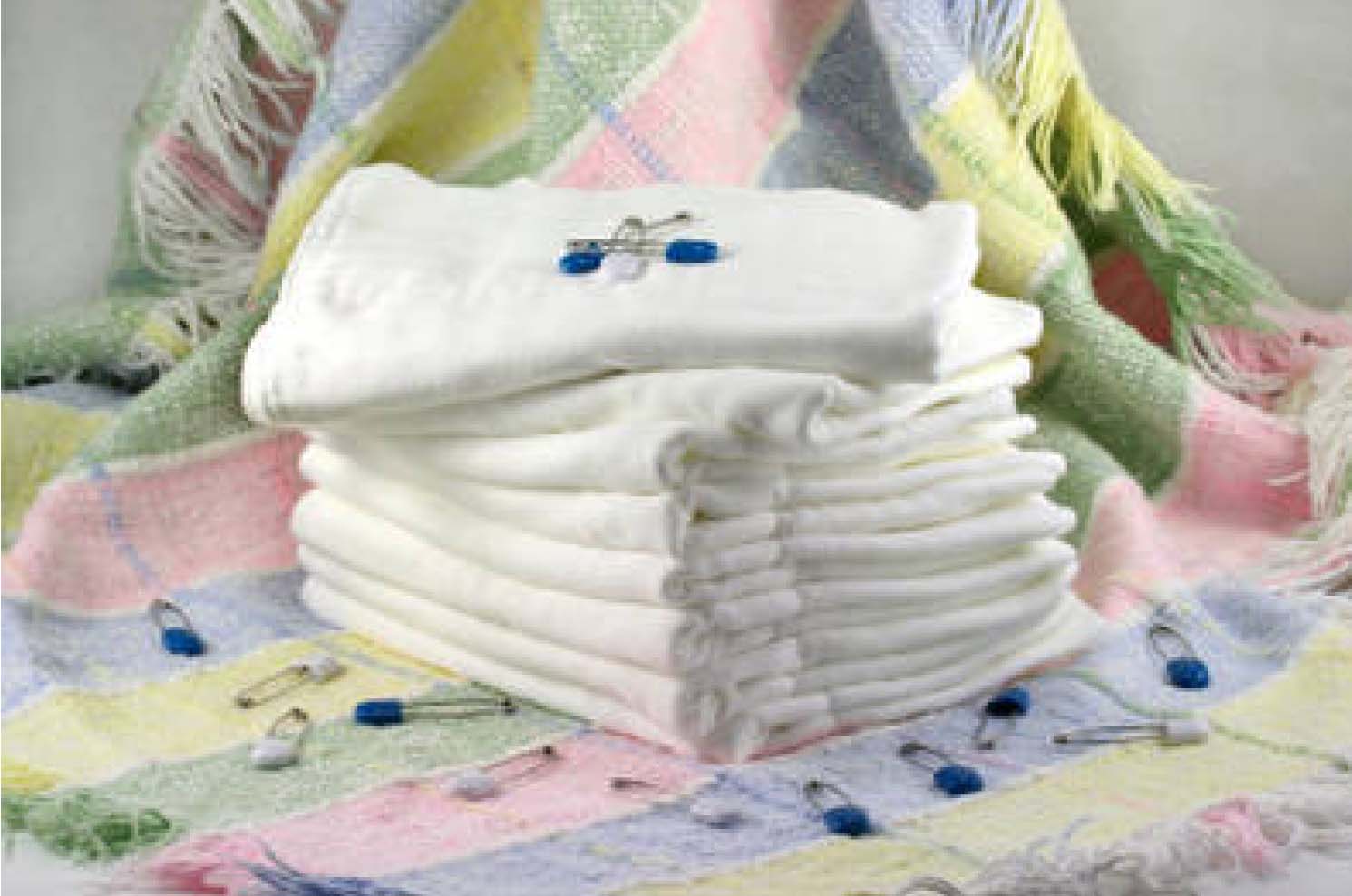First published in Tulay Fortnightly, Chinese-Filipino Digest 25, no. 3 (July 10-23, 2012): 11.
I recently gave away a bagful of lampin (diapers) through an egroup where members give and get things for free. I told the recipient some pieces are a decade old and have gone through four kids!
She asked how my kids got toilet trained. I realized that it started at infancy because I use cloth diapers instead of disposables.
Many parents take the convenient route and use disposables.
However, for the environmentally aware, there are other factors to consider – primarily that disposable diapers take 500 years to degrade! You do the math: there are approximately 2 million babies born each year in this country. Each baby uses more than 3,500 disposables in the first two years of life, and more if not toilet trained by age two. All these diapers are dumped into overflowing landfills, and are there to stay.
This realization helped me decide not to use disposables.
While researching, most of what I saw said the environmental impact of both disposables and cloth are “equally” harmful to the environment. Disposables contribute to depletion of natural resources and global warming, and may cause health problems in countries (like the Philippines) where landfills are not regulated properly (leaching of harmful chemicals, bacteria and viruses into groundwater).
Cloth diapers contribute to global warming as well, because washing them uses water, detergent and fuel (if using a washing machine).
However, the Sustainability Institute in Vermont says these studies are misleading, that the comparisons are not fair.
“A pound of wood pulp from a forest managed sustainably is more benign than a pound from a forest that has been raped and eroded – and much preferable to a pound of irreplaceable oil. A pound of dioxin from chlorine bleaching in a pulp mill is far more dangerous than a pound of sulfur dioxide from a coal-burning power plant that runs a washing machine.”
Yes, more resources are needed to manufacture cloth diapers—harvesting cotton, going through the mill, fabricating cloth. But the diaper lasts longer than one use and more than one person. For both my kids, I bought a total of 18 pieces of lampin. The rest were hand-me-downs from various friends. There is absolutely no waste because once the lampin sported holes and tears, they were used as wash cloths and then as rags, until they fell apart.
Furthermore, we have to look at how the diapers are laundered. In western countries where washers and dryers are the norm, the carbon emissions are high. On the other hand, common sense tells us cloth diaper users can compensate for carbon emissions by planting a few trees, and hanging washed diapers out to dry during the summer months. A friend in Boston refuses to use a dryer even in winter. Her husband hung two bars in the kitchen and they hang clothes and baby’s diapers near the radiator.
By comparison, there is no way to make up for disposables that exist forever.
Here in the Philippines, the problem of carbon emissions is even smaller. Dryers are not common appliances, even in upper class households. Filipinos still want clothes with that freshly-laundered-baked-in-the-sun smell. Also, most households have helpers to do the laundry, whether by hand or machine.
Since I gave birth in November 2007, I have done my share of washing diapers, especially when we are out of town without yaya in tow. I soak the diapers before washing to make things easier. After an overnight soak, the diapers are much easier to wash. The soapy water is then used to flush the toilet.
Laundering lampin is not hard work, but it is tedious and time consuming. That motivated my yayas and me to toilet train the kids as soon as they were ready. How do you know they’re ready? Both children stopped wearing lampin during the daytime when they began learning to walk. They found wearing lampin bulky and cumbersome to walk with, so as soon as they could stand independently, they pulled off the lampin themselves.
They went everywhere! I bought plenty of those cheap doormat rags and we put the rags over the puddles at home. After a week, they learned to get their own rags. We then see them prancing around with no skivvies.
At about the same time they learn to cover their own pee, I started toilet training them.
On average, I timed achi’s pee at 1.5 hours after she drank anything. Shobe took two hours. We would then bring the child to the toilet five minutes before their appointed time, whether or not anything came out.
The important thing is to let the child recognize the feeling of a full bladder and the need to go to the toilet.
All the househelpers at home were motivated to help me with the toilet training because they didn’t want to keep washing doormats. My older child took six months to train. The little one took only two weeks, mainly because she often saw achi on her little potty and it seemed like a fun thing to copy. Both kids were toilet trained before they turned two.
What started out as an environmentally friendly lifestyle choice ended as one of the most beneficial decisions I have made for my children.
